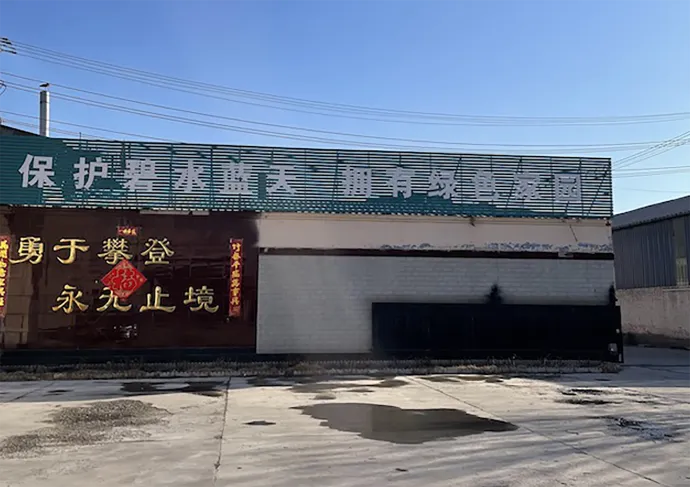- Afrikaans
- Albanian
- Amharic
- Arabic
- Armenian
- Azerbaijani
- Basque
- Belarusian
- Bengali
- Bosnian
- Bulgarian
- Catalan
- Cebuano
- Corsican
- Croatian
- Czech
- Danish
- Dutch
- English
- Esperanto
- Estonian
- French
- German
- Greek
- Hindi
- Indonesian
- irish
- Italian
- Japanese
- Korean
- Lao
- Malay
- Myanmar
- Norwegian
- Norwegian
- Polish
- Portuguese
- Romanian
- Russian
- Serbian
- Spanish
- Swedish
- Thai
- Turkish
- Ukrainian
- Uzbek
- Vietnamese
พ.ย. . 07, 2024 22:51 Back to list
Comparing Gypsum and PVC Ceilings for Your Next Interior Design Project
Gypsum vs. PVC Ceiling A Comprehensive Comparison
When it comes to choosing the right ceiling material for your home or office, two popular options are gypsum and PVC (polyvinyl chloride). Both materials have their pros and cons, and understanding them can help you make an informed decision that suits your needs and preferences. This article delves into the characteristics, advantages, and disadvantages of gypsum and PVC ceilings, providing a comprehensive comparison to help you choose the best option for your space.
Gypsum Ceilings
Gypsum ceilings are made from gypsum board, a material composed of a gypsum core sandwiched between two sheets of heavy paper. These ceilings are known for their smooth finish, versatility, and fire-resistant properties.
Advantages of Gypsum Ceilings
1. Aesthetic Appeal Gypsum ceilings provide a seamless and elegant appearance, often enhancing the overall aesthetic of a room. They can be painted or textured to suit different decor styles.
2. Fire Resistance Gypsum is a naturally fire-resistant material, making it a safer choice for residential and commercial buildings. In case of a fire, it can help contain flames and reduce the risk of spreading.
3. Acoustic Properties Gypsum ceilings can enhance sound insulation, making them ideal for spaces where noise reduction is important, such as offices, recording studios, or residential areas.
4. Durability When properly installed and maintained, gypsum ceilings can last for many years without significant wear and tear.
5. Ease of Installation Although gypsum ceilings require some expertise to install, the process is relatively straightforward compared to other materials.
Disadvantages of Gypsum Ceilings
1. Moisture Sensitivity Gypsum is susceptible to moisture damage, which can lead to sagging or mold growth. Therefore, it is not recommended for areas with high humidity, such as bathrooms or kitchens.
2. Heavy Weight Gypsum boards are heavier than many other ceiling options, which can complicate installation and may require additional support structures.
3. Cost Gypsum ceilings can be more expensive than alternative materials, particularly when factoring in installation costs and the need for additional treatments.
PVC Ceilings
gypsum vs pvc ceiling

PVC ceilings are constructed from lightweight, flexible plastic materials, making them a popular choice for modern interiors. They are available in a variety of colors, patterns, and finishes.
Advantages of PVC Ceilings
1. Water Resistance One of the most significant advantages of PVC ceilings is their resistance to water and humidity. This makes them an excellent choice for areas prone to moisture, including bathrooms, kitchens, and basements.
2. Lightweight PVC panels are lightweight, making them easy to handle and install. They can often be installed directly over existing ceilings, reducing the need for additional structural support.
3. Low Maintenance PVC ceilings are easy to clean and maintain. They do not require painting or treating, and a simple wipe down with a damp cloth is usually sufficient to keep them looking good.
4. Variety of Designs PVC ceilings come in a wide range of colors, textures, and designs, offering greater flexibility in terms of customization and interior design.
5. Cost-Effective Generally, PVC ceilings are less expensive than gypsum ceilings, both in terms of material costs and installation.
Disadvantages of PVC Ceilings
1. Durability Concerns Although PVC is resistant to water and moisture, it can be less durable than gypsum over time, especially if exposed to high temperatures or physical impacts.
2. Aesthetic Limitations While PVC ceilings offer various designs, they may not provide the same elegant finish or texture that gypsum ceilings can achieve.
3. Environmental Impact PVC is a synthetic material, and its production can have negative effects on the environment. Additionally, it is not biodegradable.
Conclusion
Choosing between gypsum and PVC ceilings ultimately depends on your specific needs, preferences, and the characteristics of the space in which you plan to install them. If you prioritize aesthetics, fire resistance, and sound insulation, gypsum may be the better choice for you, particularly in dry areas. On the other hand, if you need a lightweight, moisture-resistant option that is easy to maintain and cost-effective, PVC ceilings may be more suitable.
Evaluating the advantages and disadvantages of each material will help you make an informed decision for your ceiling installation project. Consider factors such as installation environment, budget, and desired aesthetic to choose the best ceiling solution that aligns with your goals.
-
Transform Interiors with PVC Gypsum Ceiling: A Stylish, Durable, and Moisture-Resistant SolutionNewsMay.19,2025
-
The Smart Interior Upgrade: Discover the Durability and Versatility of Gypsum Ceiling Access Panel SolutionsNewsMay.19,2025
-
The Smart Choice for Interior Design: Discover the Value of PVC Gypsum Ceiling SolutionsNewsMay.19,2025
-
Mineral Fiber Ceiling Tiles: The Smart Blend of Performance and AestheticsNewsMay.19,2025
-
Mineral Fiber Ceiling Tiles: The Superior Choice Over Gypsum for Sound and Fire SafetyNewsMay.19,2025
-
Mineral Fiber Ceiling Tiles: Eco-Friendly Strength and Style for Every CeilingNewsMay.19,2025







